
Had I scrutinised the map more carefully or wondered why my satnav said it would take me two hours to drive 20 kilometres I might have changed my mind and missed an exhilarating experience. We had been advised road GC-605 was the most scenic route to Tejeda, one of the most popular places in Gran Canaria. So we set off totally unaware that around thirty hairpin bends lay between us and Tejeda.
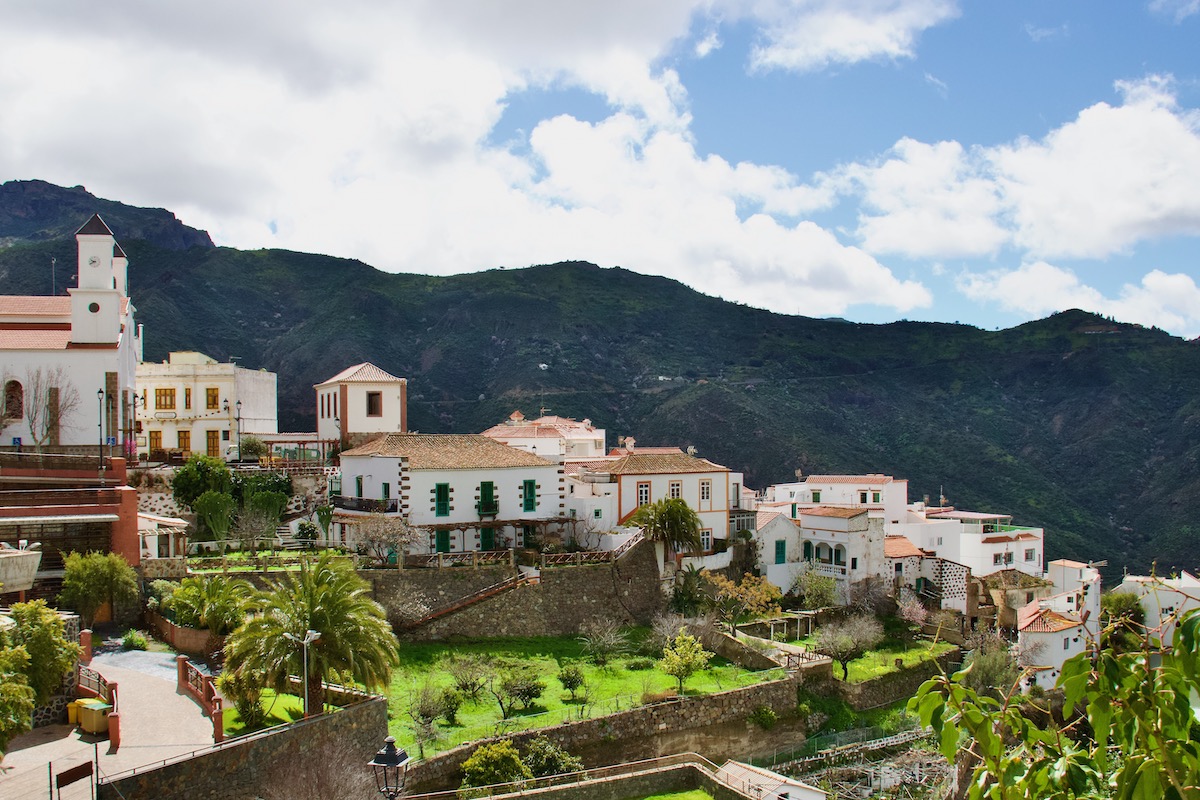
Soon after we turned on to the GC-605 in the pretty village Pie de la Cuesta we were involved in a series of hairpin binds. There was no turning back as the road was too narrow to contemplate a three-point turn. Hairpin bend followed, hairpin bend with sheer drops on one side and amber cliffs on the other. Sometimes the road just seemed to vanish and my heart would miss a beat. I was so glad I was the passenger and able to enjoy the stunning scenery above and below me. The GC-605 is one of the three great barranco drives penetrating the Gran Canaria highlands in the centre of the island. It is known as Carretera de las Presas (highway of the dams) and winds its way up the steep side of the Mogán valley to a large volcanic crater, Caldera de Tirajana.
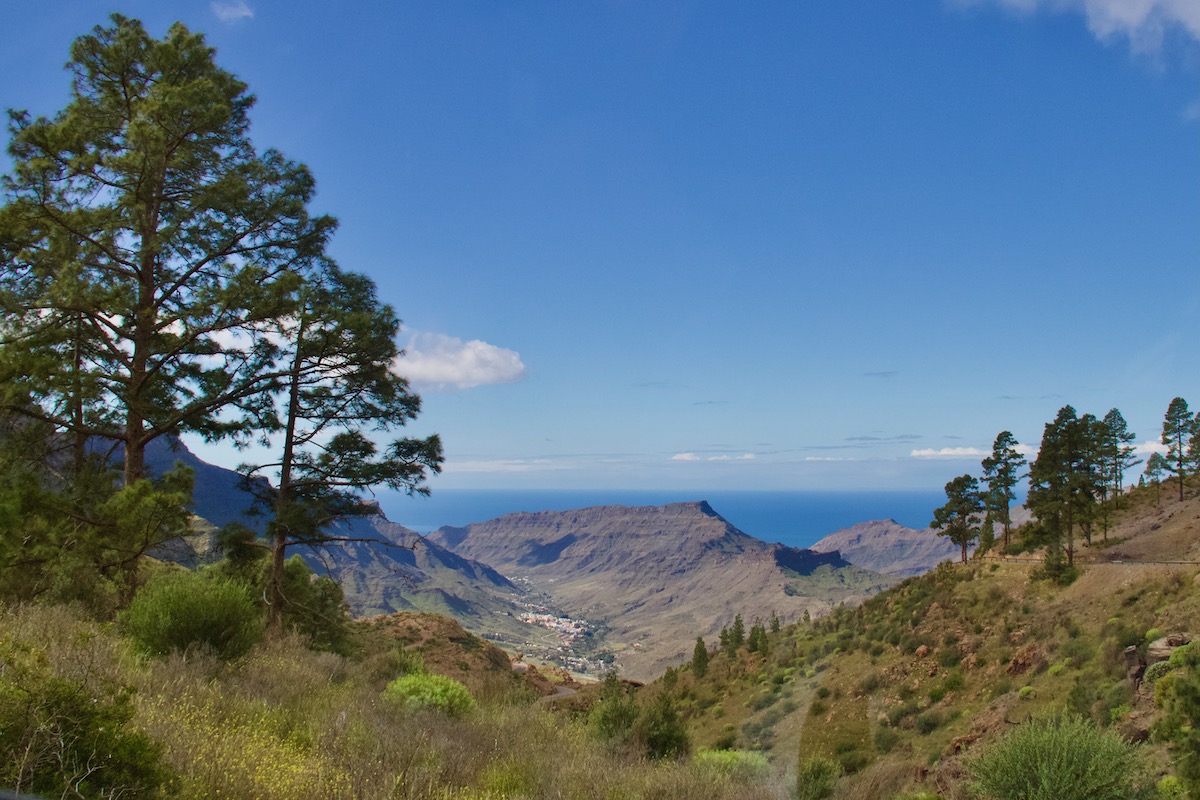
As Mirador El Mulato, a viewpoint, appeared in front of us we were so grateful to see there was sufficient space to stop for a break and enjoy the panorama from our elevated position. An old volcano towered above us and the exotic plants and woodland of the fertile valley were spread out below us. We could just about make out the white houses of Puerto de Mogán, the seaside town where we were staying on the island of Gran Canaria.
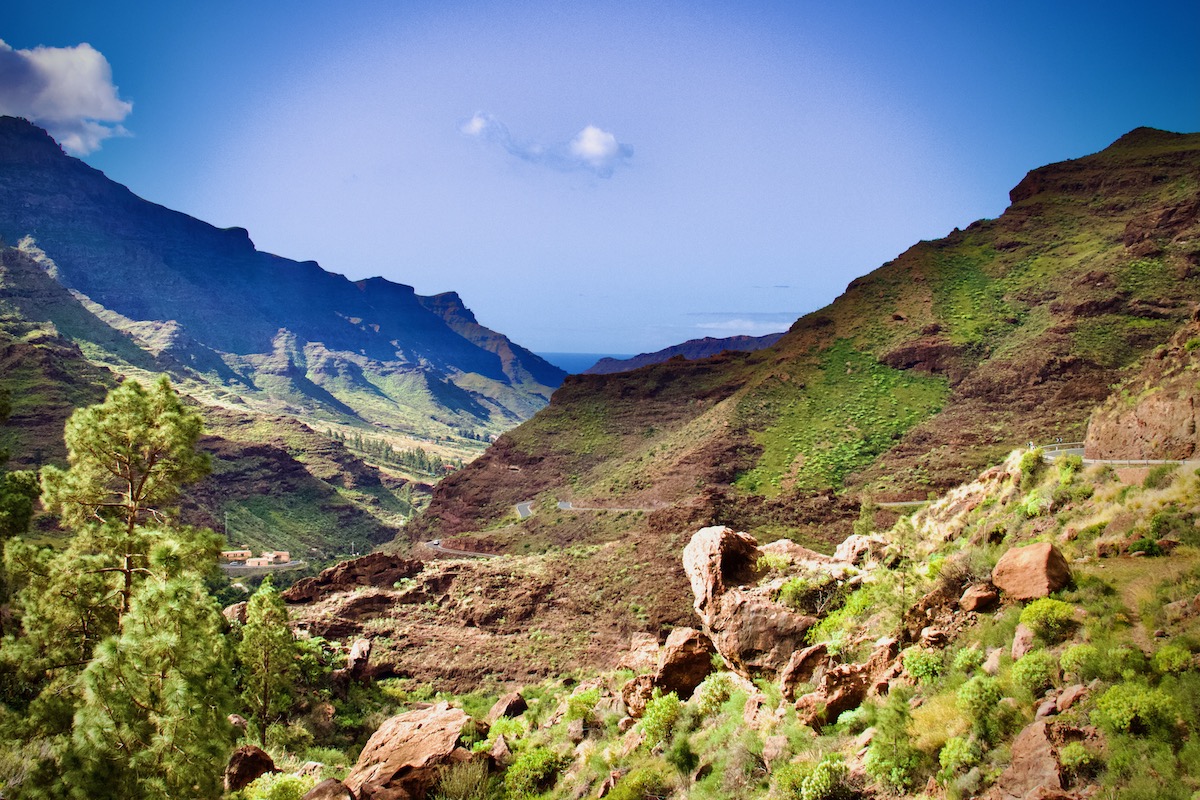
There were other cars on the road at the same time as us but fortunately we were all going the same way as there were very few places wide enough for two cars. Back in our hire car we continued our ascent. We drove through a forest of Canarian pines and then alongside the Presa de las Niñas reservoir (Dam of the Girls reservoir). We had another stop here to once again marvel at the beautiful landscape that surrounded us. And to have another break from the intense concentration our route demanded.
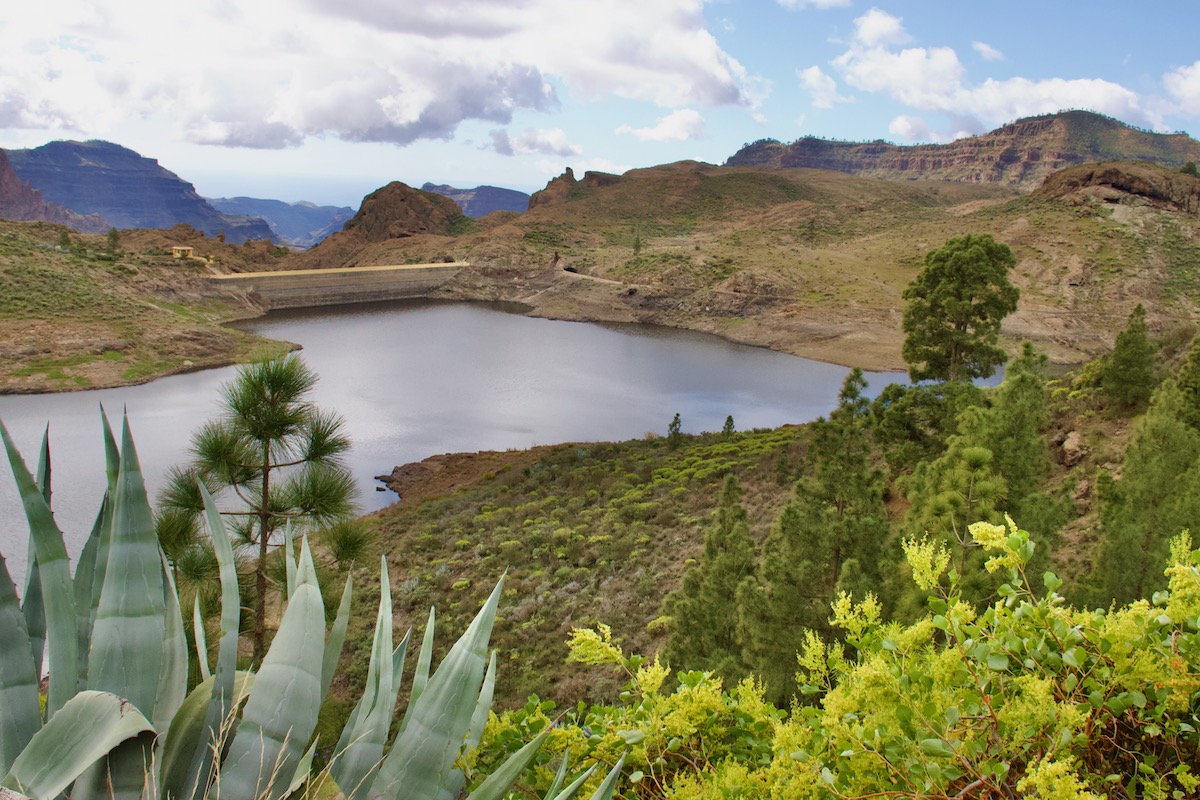
Approaching the village of Tejeda, we were surrounded by almond trees in full glorious white blossom. They were everywhere, climbing up the slopes peeking out from clumps of rock by the roadside and populating the small gardens of the pretty houses ahead of us. By this time, we had turned on to a wider road so we could stop and drink in the views once again – before we drove into a rain cloud.
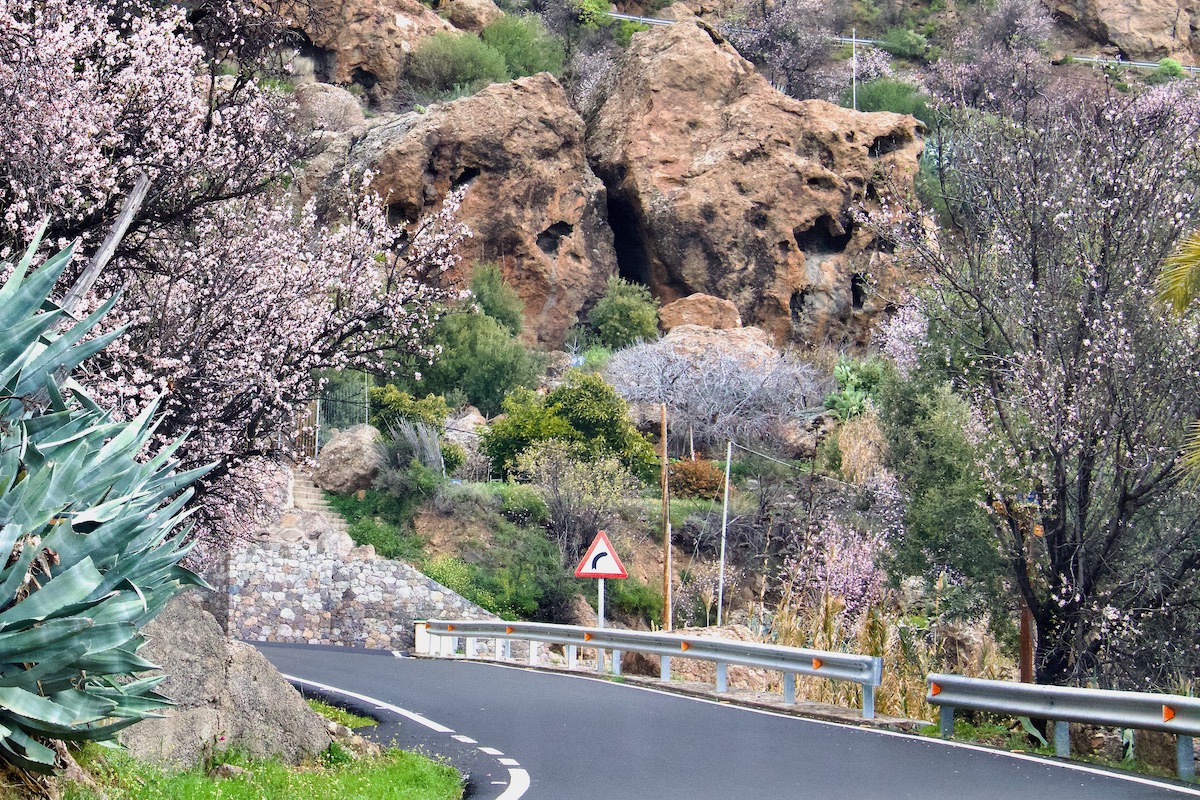
Once through the rain cloud the village of Tejeda appeared in front of us. It is perched on the rim of a large volcanic crater, Caldera de Tirajana (the Crater of Tirajana). Majestic peaks on the jagged edge of what remains of this caldera rise above the village. In particular, the two famous peaks, Roque Bentayga and Roque Nublo. Roque Bentayga is a pre-Hispanic religious site and the site of two ancient Canarian aboriginal settlements.
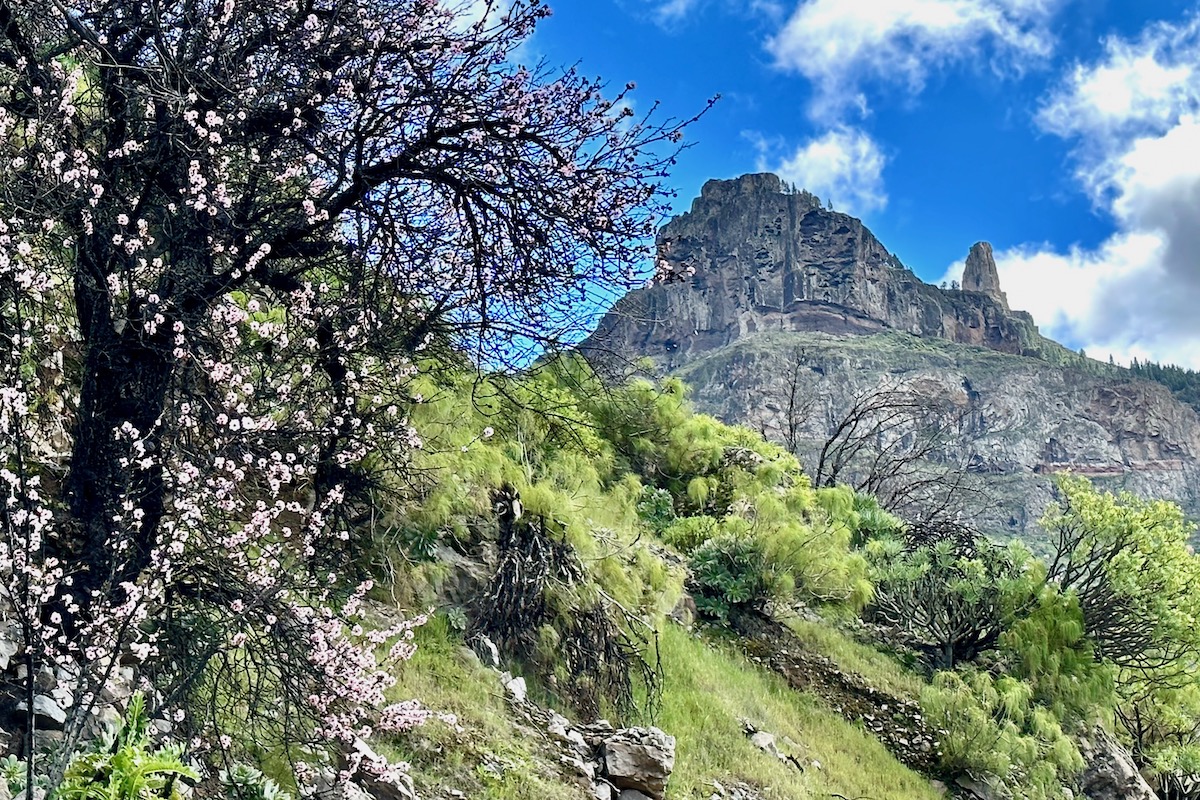
Roque Nublo, one of the biggest natural crags in the world also has a special significance for the islanders. It is an ancient aboriginal place of worship. In 1987 it was designated a protected natural place and became a rural park seven years after that.
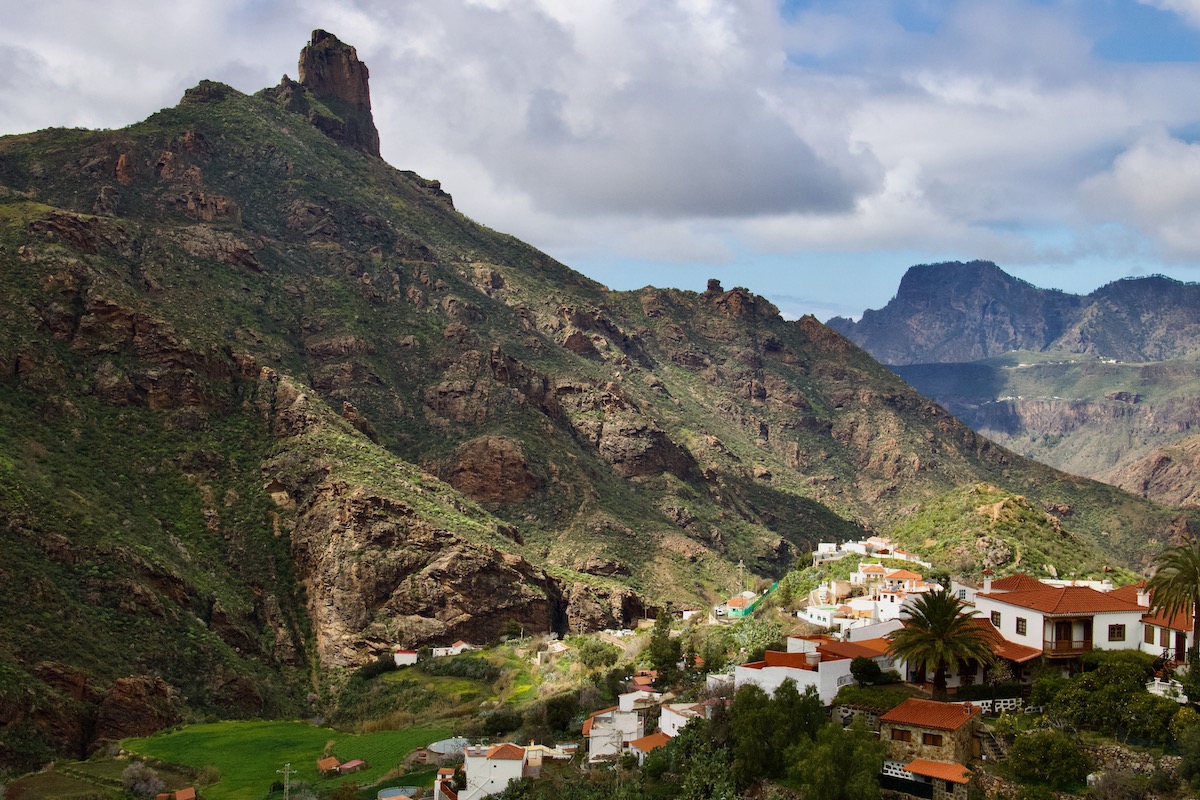
The main street of Tejeda is lined with shops and cafés. Many of the latter feature pastries made from almonds. These proved irresistible as did the opportunity to sit for a while and enjoy the sun that had re-appeared. So we sat outside a little café drinking coffee and sharing a platter of cakes.

Rested and refreshed we had a stroll around the centre of Tejeda. Dominating the centre is the Parish Church of Nuestra Señora del Socorro, built in 1921. The Abraham Cárdenes Sculpture Museum celebrates the work of this famous Canarian sculptor. There is also an Ethnographic Museum, the Medicinal Plant Centre and some pretty public gardens.
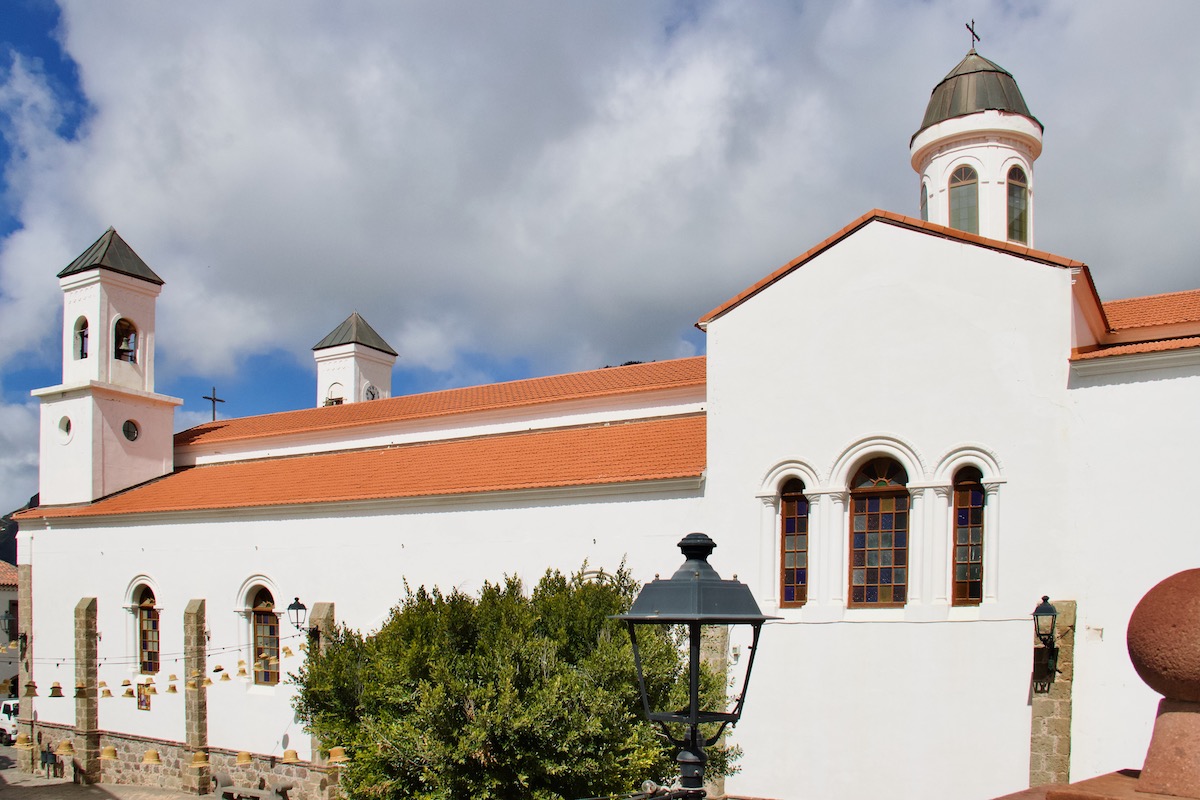
Having spent two very pleasant hours exploring this pretty village. We decided to try a different route back to Puerto de Mogán. I studied the map and found a road down, GC-210 that did seem to have many fewer hairpin bends. And although that may have been true there were stretches of unmade road without barriers so it was just as tricky.
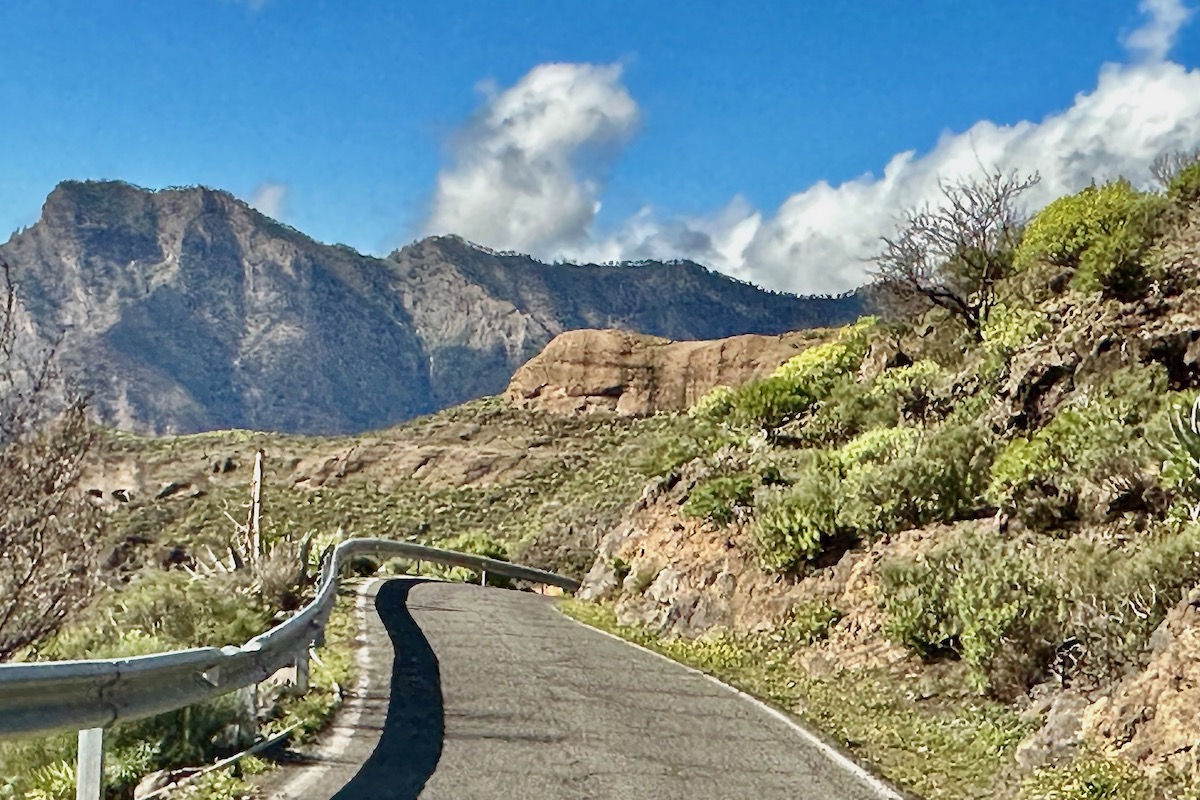
However, it was interesting to drive through different scenery and past another reservoir, Presa de Parralillo Reservoir. Safely back in our hotel I decided to find out more about the roads we had travelled today and found this comment about the road we drove back on “Steep and hair-raising, the GC-210 road drops from the pine-shrouded cumbres right down to the west coast … It's the kind of road that fries brake pads and makes grown men cry… But wow, is it spectacular." And I totally agree. But pleased to report no tears were shed in our car, the brake pads survived and the experience was intoxicating for all the right reasons.

Valery Collins is the Experienced Traveller
 An excellent raconteur, Valery has been writing about her experiences on the road since she started travelling 25 years ago. After publishing four books she turned to "online travel writing":https://experiencedtraveller.com.
An excellent raconteur, Valery has been writing about her experiences on the road since she started travelling 25 years ago. After publishing four books she turned to "online travel writing":https://experiencedtraveller.com.